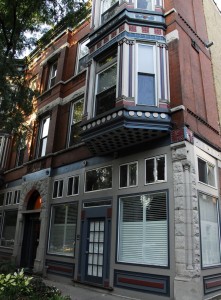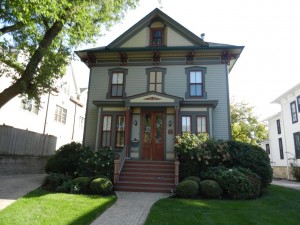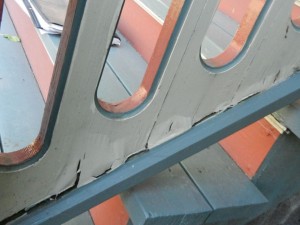In the Fall of 2011, our painting and decorating company was chosen to execute a historical paint restoration project on the metal façade of this 1889 building, in the busy Lincoln Park neighborhood of Chicago. We knew from the outset that was a very project. However, we had no idea it would earn our company three top painting awards.
The project involved a complete reinvention of a historical color palette for the building, which the ten owners had to approve. The execution of the work presented major challenges. They included meeting several layers of regulatory requirements, from City of Chicago ordinances, to OSHA and RRP rules, since the building was situated next to the sidewalk, power lines and required the use of five layers of scaffolding and a boom. The work involved the removal of a majority of the old coatings from the metal surfaces, the reproduction of many missing metal decorative ornaments and custom wood moldings. Having completed that work, we then primed the surfaces and painted them using a six-color historical palette. Painting the detailed metal elements of the two large bay windows was a little bit like painting by numbers. To ensure color placement accuracy, we had to number the color breaks from top to bottom.
The most prestigious award was the Grand Prize of the TOP JOB Awards from the American Painting Contractor magazine. We also won the Commercial Exterior Restoration Award in the competition organized by the Painting and Decorating Contractors of America (PDCA). We also most recently won the Grand Prize of “Chicago’s Finest Painted Ladies and her Court” competition, which the Chicago Paint and Coatings Association has organized for the twenty-sixth year.
As specialist in historical paint restoration, our biggest reward is to know that our clients were delighted with the result and that their building is now an inspiration to other owners in the area for restoring the original beauty of their own buildings.








 Follow
Follow


